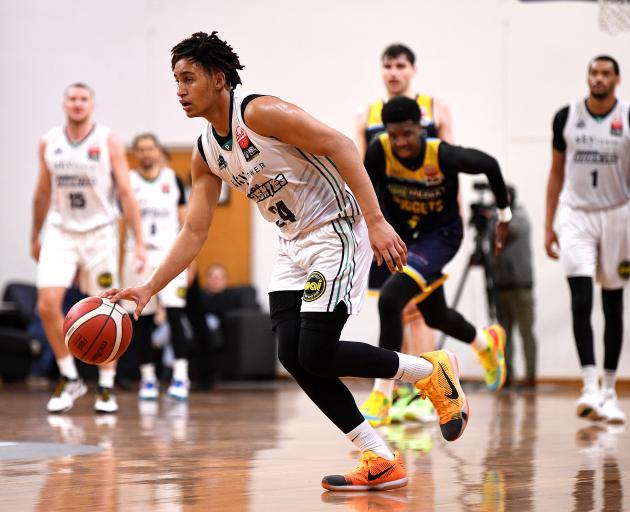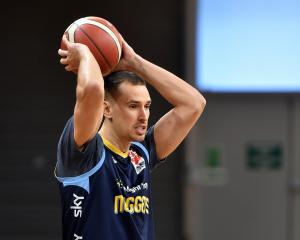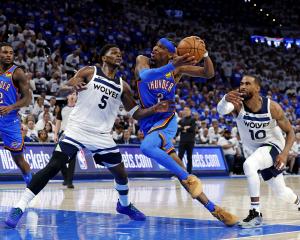
Basketball has gone through something of a boom over the past decade.
Last year, 24,212 secondary school pupils played the sport around New Zealand, up from 17,500 a decade ago.
It has spent time as Otago’s most-participated sport at the same level in recent years.
Many kids are now growing up with a basketball in their hands, playing and developing from a young age — rather than playing on the side of rugby and cricket.
The NBA is now one of the most-followed sporting leagues among the country’s younger generations.
So why has no-one followed Steven Adams to that pinnacle league?
The short answer is that making that top level is hard — incredibly hard.
It is not just New Zealand that has experienced this growth.

It is now a truly global game and the best players are coming from all over — meaning you are competing with more players for spots.
That is not to say New Zealand has not produced good players in that time.
The trickle of youngsters playing college basketball 20 years ago has turned into a flood in the past decade.
Covid-19 meant numbers were slightly down last season, but more than 100 young Kiwis plied their trade in US colleges in the 2019-20 season.
Many of those did it at a division one level — at one point New Zealand had 20 men at that highest level, compared with some years in the 2000s when there was just one.
There have been some very good players among that group although most have lacked one thing.
You need to have the body, the skill set and fit with the modern-NBA type of player.

But he lacks an NBA-level jump shot.
Isaac Fotu is physical, skilful and rebounds well, but is probably a few centimetres too short.
Corey Webster is a great scorer and shot creator, but is never going to be a go-to player at the next level.
Others have gone close — Finn Delany, Tom Abercrombie and Rob Loe have all had chances.
It would not be a surprise if Delany got another opportunity if he could put together another good NBL season.
Then there has been the type of player New Zealand has produced.
Many of its top prospects have been classical centres — Jack Salt and Sam Timmins among others.
Thirty years ago, those types of big men were of huge value to the NBA.
Some teams would have two on the court at once — now many will not even have two in their entire squad.
The move towards the athletic, mobile, all-round centre has hurt that type of player.
There is still a place for them, but rather than 100 spots in the league, there might be closer to 30 now.
Even Adams was traded this week, as his former team wanted a shooting centre rather than an interior presence.
Then there are the ones who do not work out.
Tai Wynyard left high school as arguably the top prospect New Zealand had produced.
Big, strong, athletic and skilful, he had been named most valuable player at the under-18 3x3 world championships as a bottom-age player.
He went to the University of Kentucky, which at the time was churning out NBA players, and barely played.
His career took a dive, although he recently experienced signs of an upswing in this year’s NBL.
There are very few who leave school with the base to build from to become an NBA player.
The ones you have, you really need to cash in on.
Of course that is the men’s game — which is what the NBA is limited to.
New Zealand’s latest genuine prospect is Waikato-product Charlisse Leger-Walker, who will almost certainly play in the WNBA.
The 19-year-old guard had a superb first season with Washington State, making her all-conference team and being an all-American honourable mention.
ESPN named her as the 17th-best player in women’s college basketball for the coming season — and she is only in the second of four years.
There are plenty more coming through as well, in both the men’s and women’s game.
How many take the ultimate step to the NBA is hard to determine.
As the sport continues to grow globally it is only going to be harder to crack that pinnacle league.
But with the Australian NBL turning into a world-class league and Europe as an option, there are still plenty of Kiwis playing at a high level beneath it.
Three to watch
CHARLISSE LEGER-WALKER
A do-everything guard, the Waikato product is arguably New Zealand’s best hoops prospect. First played in the women’s national league aged 12 and is now showing her ability to take over games against the best the United States has to offer. It is a matter of when, rather than if, she makes the WNBA.
DONTAE RUSSO-NANCE
A 16-year-old 1.90m guard who averaged 11.5 points per game in this year’s NBL. Fantastic slasher with the ability to shoot and pass as well. Has dominated age-grade basketball and in 2019 won MVP of the under-17 national championships as a 14-year-old.
TAFARA GAPARE
The first recipient of the Steven Adams’ scholarship, Gapare has committed to play at the University of George Washington. An athletic and skilful 2.03m forward, the separator for Gapare is his NBA body — which is something few New Zealanders possess.








